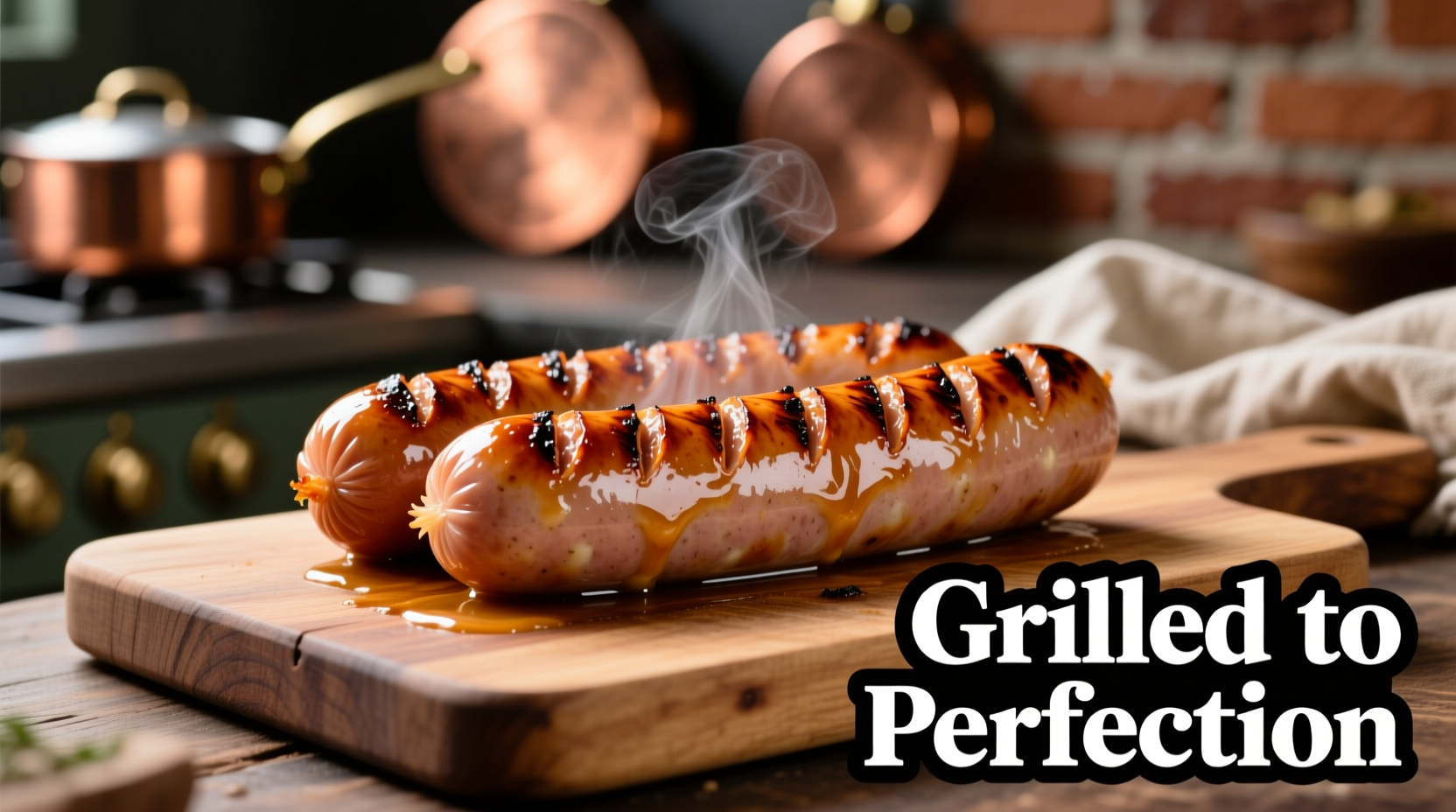The fastest, most reliable way to cook brats is by grilling them slowly over medium heat (325-350°F) for 15-20 minutes while turning frequently, reaching an internal temperature of 160°F. Never prick brats with a fork—use tongs to prevent juice loss. For juicier results, simmer in beer first for 10-12 minutes before finishing on the grill.
Mastering Bratwurst: Your Complete Cooking Guide
Bratwurst isn't just another sausage—it's a German culinary tradition dating back to 1313 in Nuremberg. Whether you're hosting a backyard barbecue or need a quick weeknight dinner, knowing how to cook brats properly transforms this humble sausage into a juicy, flavorful centerpiece. Unlike other sausages, brats contain higher fat content that requires specific cooking techniques to prevent splitting while ensuring food safety.
Why Traditional Methods Matter
Bratwurst cooking has evolved significantly since its medieval origins. Early German butchers developed the beer-boiling technique not just for flavor, but as a practical solution when precise temperature control wasn't possible. Today's modern grills and stovetops give us more control, but understanding this historical cooking evolution helps us appreciate why certain methods work best:
| Era | Cooking Method | Limitations |
|---|---|---|
| Medieval (1300s) | Boiling in beer or water | No temperature control, risk of splitting |
| 19th Century | Cast iron griddles over fire | Inconsistent heat, flare-ups |
| Modern (Today) | Two-zone grilling, precise thermometers | Requires understanding of technique |
This historical progression shows why simply throwing brats on a hot grill leads to disaster. The modern two-stage approach—gentle pre-cooking followed by browning—honors tradition while leveraging today's equipment.
Essential Preparation Steps
Before you start cooking, proper preparation prevents common mistakes:
- Temperature check: Remove brats from refrigerator 20 minutes before cooking
- No poking policy: Never pierce casing—this releases precious juices
- Pat dry: Moisture causes steam pockets that lead to splitting
- Prep tools: Have long-handled tongs ready (forks are bratwurst enemies)

Four Foolproof Cooking Methods
1. The Two-Stage Grilling Method (Best for Flavor)
Grilling remains the best way to cook brats outdoors when done correctly:
- Set up two-zone fire: One side at 225-250°F (indirect), one side at 375-400°F (direct)
- Place brats on indirect heat for 15-18 minutes, turning occasionally
- Move to direct heat for 2-3 minutes per side until golden brown
- Check internal temperature reaches 160°F using an instant-read thermometer
This method prevents the common mistake of cooking brats over high heat, which causes casing to burst from internal steam pressure. The USDA Food Safety and Inspection Service confirms 160°F is the safe minimum internal temperature for pork products (USDA.gov).
2. Beer-Boiled Brats (Traditional Approach)
The classic Wisconsin method works well for indoor cooking:
- Add 12 oz beer, 1 sliced onion, and 1 tbsp mustard to a skillet
- Simmer brats for 10-12 minutes (not boiling)
- Finish on medium grill or cast iron for 3-4 minutes per side
Important context boundary: Never boil brats vigorously—this causes casing to separate. The beer's purpose is gentle pre-cooking, not flavor infusion (most beer flavor cooks out). For authentic results, use a lager or pilsner, not dark beers which overpower the meat.
3. Stovetop Method (Perfect for Rainy Days)
When grilling isn't an option:
- Heat cast iron skillet over medium-low heat
- Add 1/4 cup water and cover for 8 minutes
- Remove lid, increase heat slightly, cook 4-5 minutes per side
- Finish with 1 minute on highest heat for caramelization
This technique creates steam initially to cook through gently, then develops a crispy exterior. The water method prevents sticking better than oil for this high-fat sausage.
4. Oven Method (For Large Gatherings)
When cooking for a crowd:
- Preheat oven to 325°F
- Arrange brats on parchment-lined baking sheet
- Bake 20-25 minutes, turning halfway
- Broil 2-3 minutes for color (watch carefully)
This method works best for pre-cooked brats. For raw brats, increase time to 25-30 minutes. Always verify with a thermometer—oven temperatures vary significantly.
Determining Doneness: Beyond Guesswork
Forget unreliable methods like checking firmness or color. The only accurate way to know how to tell when brats are done is with a digital thermometer. Insert horizontally through the end to avoid false readings from the casing:
- 150-155°F: Slightly pink, very juicy (safe for pre-cooked brats)
- 156-159°F: Light pink center, ideal texture
- 160°F: Officially safe temperature (USDA standard)
- 165°F+: Risk of dryness, avoid if possible
Rest brats for 3-5 minutes after cooking—the internal temperature will rise 5-7 degrees during this time, reaching perfect doneness without overcooking.
Avoid These 3 Common Mistakes
Even experienced cooks make these errors when learning how to cook brats without splitting:
- The High-Heat Rush: Starting on too hot a surface causes casing to burst from steam pressure
- Fork Fiasco: Piercing releases juices that keep brats moist
- Skipping the Rest: Cutting immediately after cooking loses up to 23% of juices (per American Meat Science Association research)
Serving Suggestions That Elevate Your Brats
Traditional German pairings transform your bratwurst cooking experience from ordinary to authentic:
- Bread: Steigerwald or pretzel buns (never regular hot dog buns)
- Mustards: Dijon for sharpness, sweet mustard for balance
- Sides: Sauerkraut cooked with apples, German potato salad
- Toppings: Caramelized onions, beer-braised peppers
For contemporary twists, try brat slices in pasta dishes or chopped for breakfast hash. The cooking method determines versatility—grilled brats work best for sandwiches, while beer-boiled versions excel in stews.
Storage and Reheating Guidelines
Proper handling maintains quality after your bratwurst cooking session:
- Refrigeration: Store cooled brats in airtight container for 3-4 days
- Freezing: Wrap individually, keep up to 2 months
- Reheating: Simmer in beer or broth (never microwave)
Reheated brats should reach 140°F internally. The broth method restores moisture better than dry-heat approaches.











 浙公网安备
33010002000092号
浙公网安备
33010002000092号 浙B2-20120091-4
浙B2-20120091-4